New Nightline IR camera - DF5200HD-DN/IR
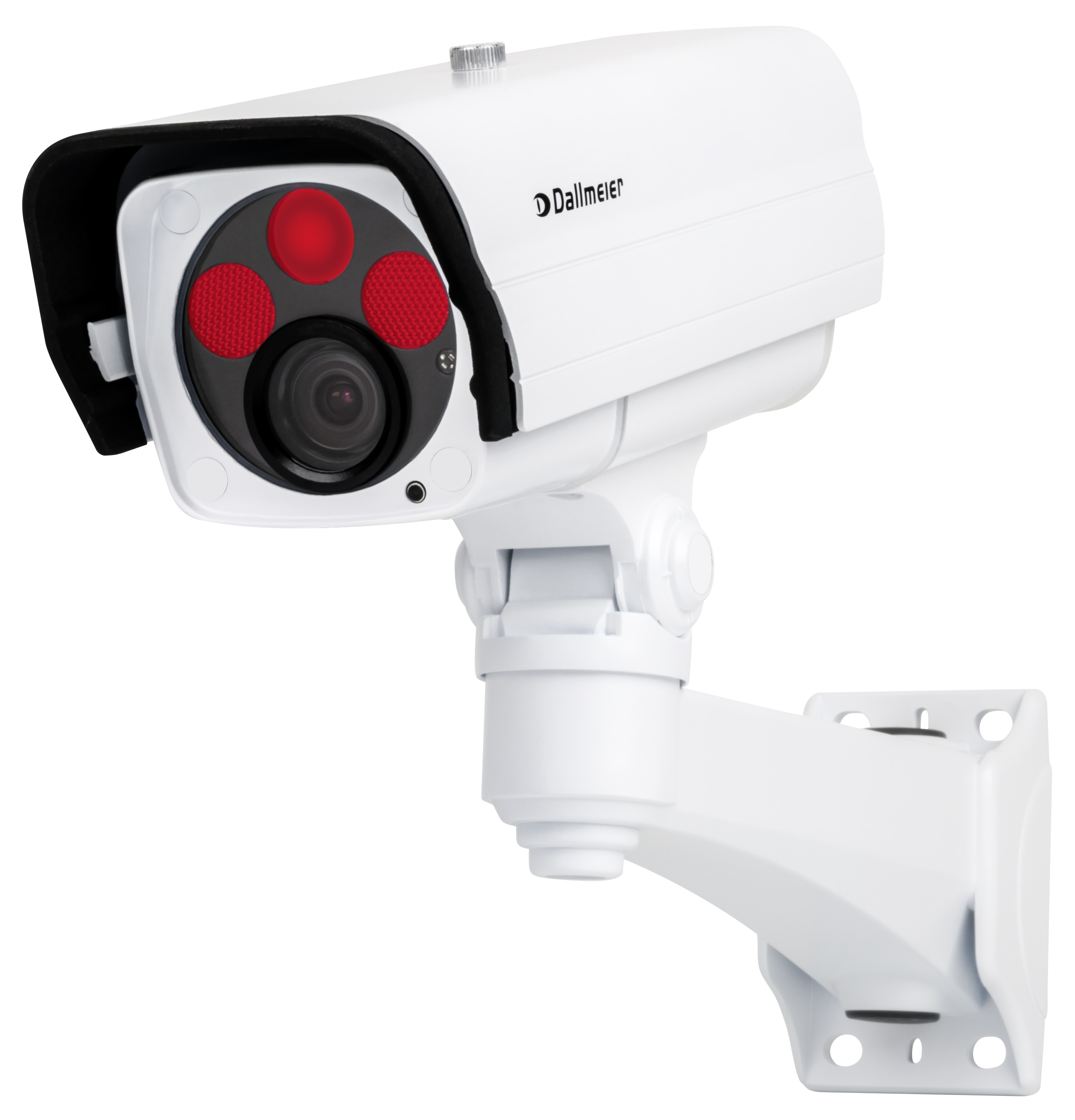 The DF5200HD-DN/IR Nightline has been developed with special attention to difficult light and environmental conditions for 24-hour video surveillance. By using the most advanced sensor and encoder technology, the DF5200HD-DN/IR sets new standards in camera technology.
The DF5200HD-DN/IR Nightline has been developed with special attention to difficult light and environmental conditions for 24-hour video surveillance. By using the most advanced sensor and encoder technology, the DF5200HD-DN/IR sets new standards in camera technology.The DF5200HD-DN/IR provides recordings with excellent contrast, brilliant clarity as well as highest detail resolution and colour fidelity, even in low light conditions. The extremely high light sensitivity of the sensor and the sophisticated image processing ensure crisp colour images even in the dark. In night mode, the camera also provides outstanding results due to the excellent infrared sensitivity and the integrated IR illumination.
The camera is equipped with an ambient light sensor and a removable IR cut filter and can automatically switch between day and night mode. In addition, different day and night presets for the exposure settings can be defined and adjusted.
The DF5200HD-DN/IR has an integrated adaptive IR illumination provided by semi-covert 850 nm high power LEDs. The new IR hood which is already included in delivery absorbs unwanted IR stray light and thus increases image quality in IR night mode.
The camera has a high-quality motor-driven megapixel varifocal lens that is perfectly tuned to the image sensor. The adjustment of zoom, focus and iris is made conveniently using a web browser. The manual lens setting directly at the installation site of the camera is not required.
Built into an IP66-rated weather-proof enclosure, the camera is designed for both indoor and for outdoor applications. The camera is operated via Power over Ethernet (PoE Class 0, IEEE 802.3af) which allows for an easy, quick and cost-effective cabling and commissioning. As all products from Dallmeier the IR camera is developed and manufactured in Germany – Quality made by Dallmeier, made in Germany.

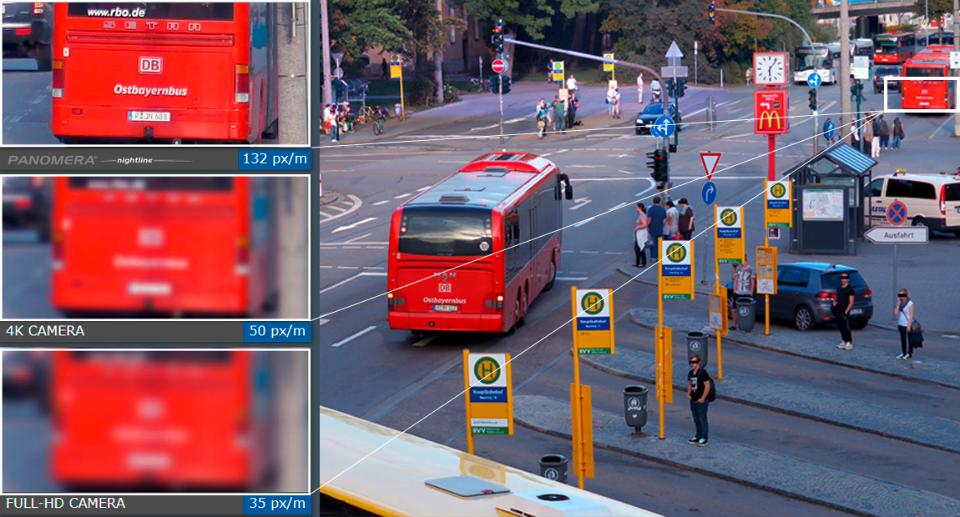

How does a camel pass through the eye of a needle? Data transmission and data security in the video network
 The relentless drive for better picture quality and the trend towards megapixel and HD cameras have together brought about the enormous growth in the volumes of data generated when surveillance scenarios are recorded – and consequently the expansion of bandwidth needed to transmit the pictures. Anyone who is planning to set up a video network must therefore begin by answering the question: How can these enormous data volumes be transmitted? How can the load on the company network be reduced while still maintaining the highest level of data security?
The relentless drive for better picture quality and the trend towards megapixel and HD cameras have together brought about the enormous growth in the volumes of data generated when surveillance scenarios are recorded – and consequently the expansion of bandwidth needed to transmit the pictures. Anyone who is planning to set up a video network must therefore begin by answering the question: How can these enormous data volumes be transmitted? How can the load on the company network be reduced while still maintaining the highest level of data security?Anyone who installs a video surveillance system nowadays expects not only good picture quality, but also smooth image sequences with no jerking – ideally not only from the PC but also away from the office, via a laptop, tablet or smartphone. And the calculation is really quite simple: The better the picture quality, the higher the frame rate, the larger the volume of data collected, and the wider the bandwidth required to transmit everything. Particularly with HD and megapixel cameras, the limits of the possible are soon reached, even in a broadband network.
And another important point must also be considered: People often forget that when it comes to transmitting pictures, not only the download but also the upload is crucially important. Even with good DSL connections, the upstream is much slower than the downstream – so bottlenecks are encountered mostly when uploading!
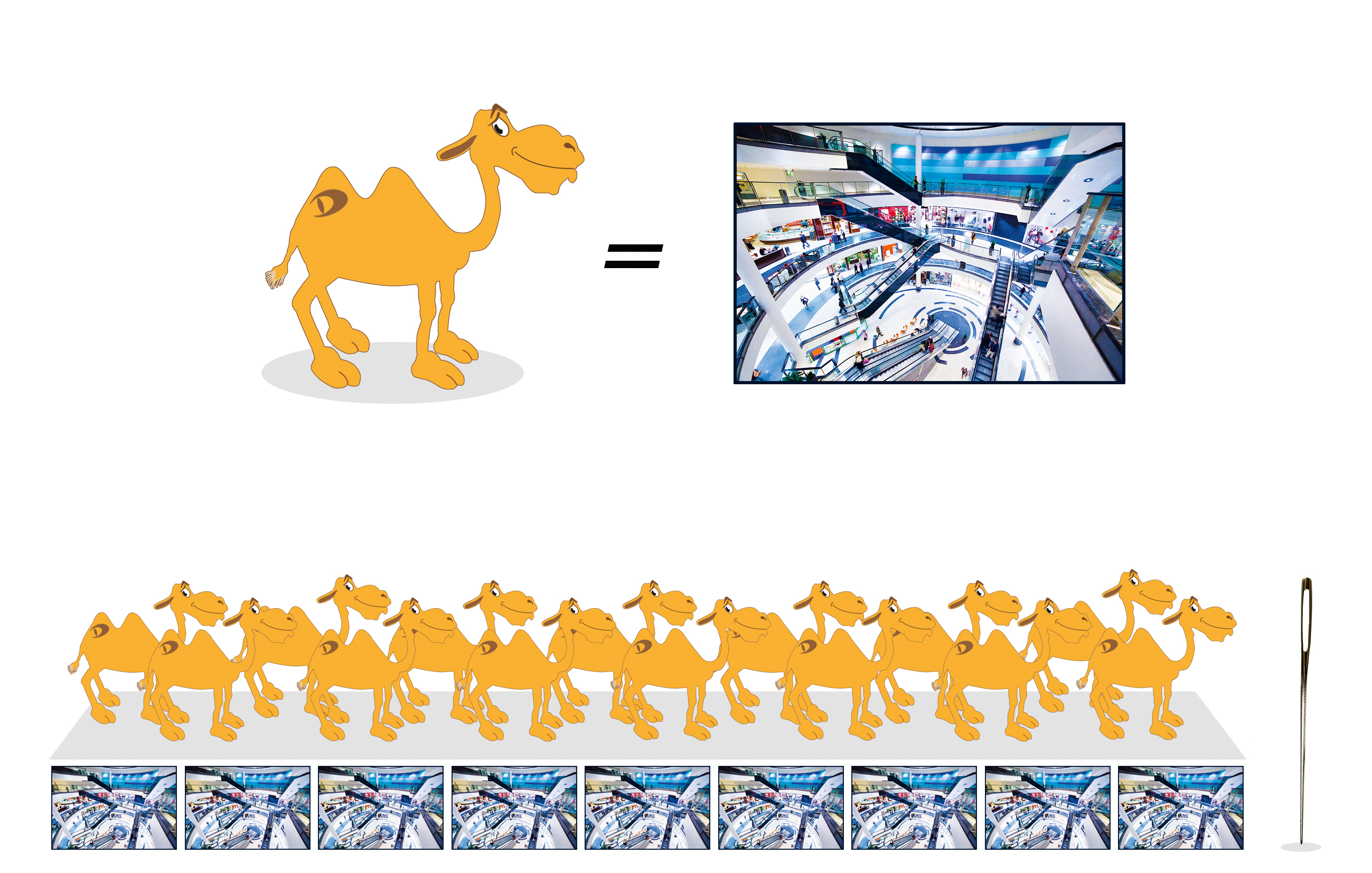 So the question arises: How do you send large volumes of data along a narrow transmission path? In other words: How can you pass a camel through the eye of a needle? If the proverbial camel represents a large picture file, in the case of a video stream it might be more accurate to talk about threading an entire caravan. And as soon as anyone attempts to retrieve the sequences not just from a single camera but from several cameras, in “multiple split” mode, across a low bandwidth link for viewing on a computer screen (the equivalent of several caravans passing through the eye of the needle at the same time), the limits of simple streaming processes are reached very soon.
So the question arises: How do you send large volumes of data along a narrow transmission path? In other words: How can you pass a camel through the eye of a needle? If the proverbial camel represents a large picture file, in the case of a video stream it might be more accurate to talk about threading an entire caravan. And as soon as anyone attempts to retrieve the sequences not just from a single camera but from several cameras, in “multiple split” mode, across a low bandwidth link for viewing on a computer screen (the equivalent of several caravans passing through the eye of the needle at the same time), the limits of simple streaming processes are reached very soon.One possible solution to this problem is the method known as “Dual Streaming”: In Dual Streaming, the encoder generates two streams, one of which is used for recording, and the other for transmitting live images. So the recorder can create a high-quality recording using one stream, and at the same time a slightly lower quality stream, which is more economical in terms of bandwidth, can be selected for live picture transmission. But even limits of the capabilities of this method can also be reached very soon. This might happen if a very narrow bandwidth is available, such as when UMTS or edge connections are used, if a multiple split is to be shown, or if both live and recorded image material is to be transmitted at the same time – this last is what happens most often in practice.
 The solution can be found in a special transmission process called PRemote-HD, which can even be used to visualise HD and megapixel streams with little available bandwidths. Like Dual Streaming, PRemote-HD also uses two streams for recording and transmitting. But with the aid of a special transcoding method PRemote-HD achieves remarkable results even with the narrowest of bandwidths, such as are used for mobile communication devices – so transmitting to a tablet or smartphone now works perfectly.
The solution can be found in a special transmission process called PRemote-HD, which can even be used to visualise HD and megapixel streams with little available bandwidths. Like Dual Streaming, PRemote-HD also uses two streams for recording and transmitting. But with the aid of a special transcoding method PRemote-HD achieves remarkable results even with the narrowest of bandwidths, such as are used for mobile communication devices – so transmitting to a tablet or smartphone now works perfectly.Furthermore, compared with Dual Streaming, for which only the quality of live images can be modified for transfer, PRemote-HD also allows a bandwidth-friendly transfer of recorded image material. With this technology, live images can be viewed, and the recordings can also be evaluated across great distances with top resolution.
And PRemote-HD can also be used for splitstreaming. This is when a multiple split is transmitted in a single image, so only one stream is needed – and the bandwidth required is also reduced correspondingly.
PRemote-HD works with all network cameras that are recorded in MJPEG or H.264 format via RTSP processes.
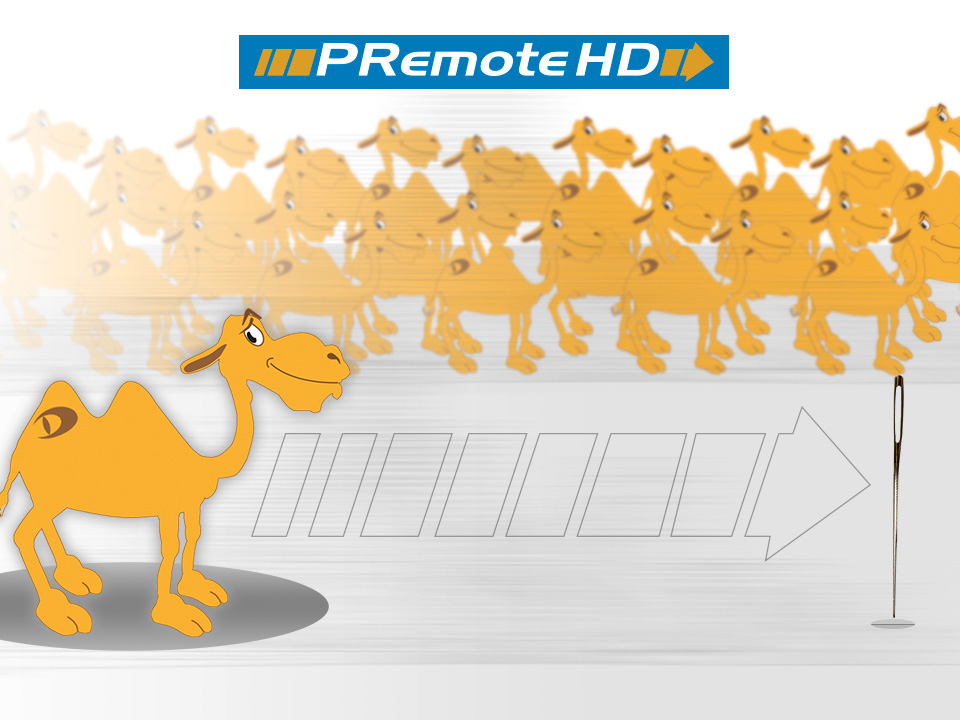
*****
Videos:
http://www.dallmeier.com/en/products/transmission/premote-hd.html
https://www.youtube.com/watch?v=NDwQiK_CnAo
*****
Picture captions:
- Camel_01.jpg: How do you send large quantities over a narrow transmission path? Or to put it another way: How do you pass a camel through the eye of a needle?
- Camel_02.jpg: If the camel stands for a picture – a video stream would be like threading an entire caravan through the needle’s eye.
- Camel_03.jpg: If a multiple split is required, this is equivalent to several caravans, all at once.
DVS 2200 IPS expands analysis portfolio With the new DVS 2200 IPS, Dallmeier is expanding its portfolio with regard to intelligent video analysis.
With the new DVS 2200 IPS, Dallmeier is expanding its portfolio with regard to intelligent video analysis.
The DVS 2200 IPS is a high-performance server appliance for the analysis of up to 12 IP video channels and the recording of up to 24 IP video channels. Both the analysis software (DVS Analysis Server) and the recording software (Smavia Recording Server) are already installed by the manufacturer and can be configured easily with a browser via Ethernet.
The DVS 2200 IPS is based on the SEDOR® technology, a high-performance and self-learning video analysis technology which provides outstanding analytical results due to state-of-the-art image analysis algorithms and the constant adjustment of the system parameters to the current surrounding conditions (auto-adaptation).
In conjunction with different analysis applications (Intruder, Object Counting, Art), the DVS 2200 IPS can serve a variety of surveillance and counting purposes. It is notable particularly for its outstanding flexibility: The licences for recording and analysis are independent of one another, so they can be adapted individually to the requirements of the respective situation.
Analysis results can be output in real-time directly to the external management clients PGuard advance and SMAVIA Viewing Client. In addition, they can be sent as a message in XML format or used for the control of external relays over Ethernet. The results of counting applications can be represented graphically or in tabular form using the optional display and evaluation module SEDOR® DiViStic over Ethernet with a browser.
The DVS 2200 IPS has a compact 1 RU housing and can be installed in a 19'' rack using the included mounting brackets.
Dallmeier Mobile Video Center App for iOS and Android
The popular DMVC smartphone App for the mobile access to Dallmeier systems is now also available for Android devices.
The App “Dallmeier Mobile Video Center” (DMVC) enables the mobile access to Dallmeier systems (DVR, NVR, server, cameras) using a smartphone with Android or iOS operating system. You can conveniently access the live video as well as the corresponding recordings on the go. Special transcoding prepares the video for ideal display on the smartphone and ensures a high frame rate at the same time.
The Dallmeier App has an intuitive operation including multi-touch zoom and allows individual settings for 3G and Wifi operation. Particularly interesting: a 3G download counter with adjustable limit allows an efficient cost control at every moment.
For an optimal overview all cameras are shown in a list with preview images. The video resolution is freely selectable: QCIF, CIF, 2CIF, 4CIF or HD. A recording and snap shot function is available both in live and playback mode. For a quick and convenient access on current recordings, there is a separate daily-track, additionally an individual favourites list can be created. The request of system messages is also possible.
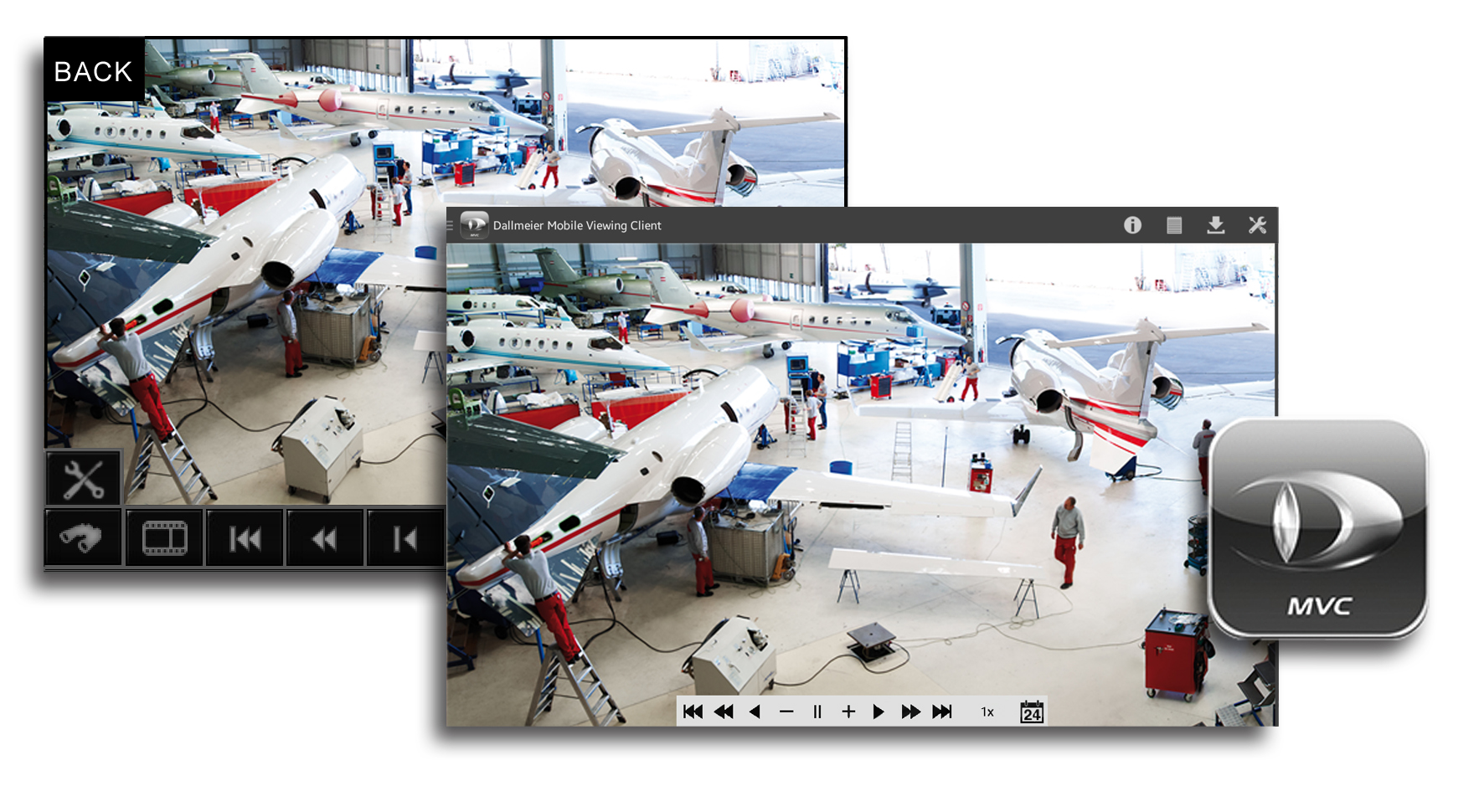
Download
The Dallmeier App “Dallmeier Mobile Video Center“ is available for free…
… in the iTunes Appstore: https://itunes.apple.com/en/app/dallmeier-mobile-video-center/id429884738?mt=8&affId=1801837&ign-mpt=uo%3D2#
… on Google Play: https://play.google.com/store/apps/details?id=com.dallmeier.dmvc&hl=en
Video planning tool from JVSG supports Dallmeier products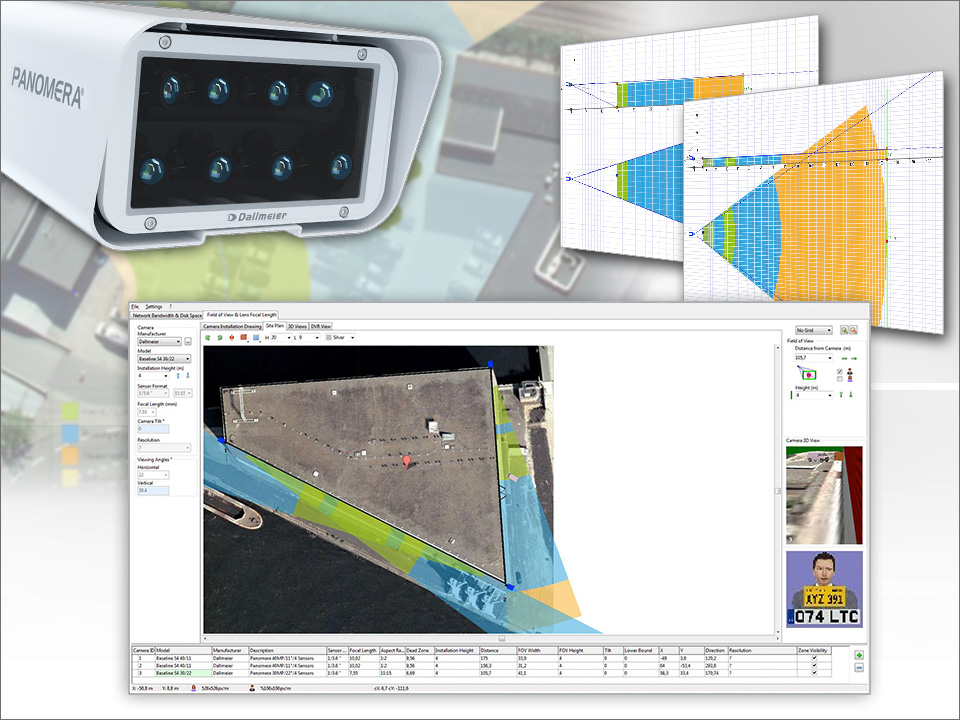 The video planning tool from JVSG now also supports products made by the Regensburg manufacturer Dallmeier.
The video planning tool from JVSG now also supports products made by the Regensburg manufacturer Dallmeier.
The "IP Video System Design Tool" from JVSG is a software program that is used widely for planning video surveillance projects. An extensive product database and clear 3D views provide help in choosing the right cameras and their optimal installation locations. The latest version of the tool now supports cameras by Dallmeier as well – including the Panomera® multifocal sensor systems.
Max Shumeyko, a founder of JVSG, says: “I am really glad that now IP Video System Design Tool supports multifocal sensor systems from Dallmeier. Cameras like Panomera® have changed the landscape of high resolution video surveillance. With just two Panomera® cameras it is possible to cover a huge area of 100x100 metres with an image quality sufficient for people recognition.” And he adds: “Megapixel cameras and such cameras as Panomera® require proper planning. And our design software is here to help to design efficient video surveillance systems quickly and easy."
More information: www.jvsg.com
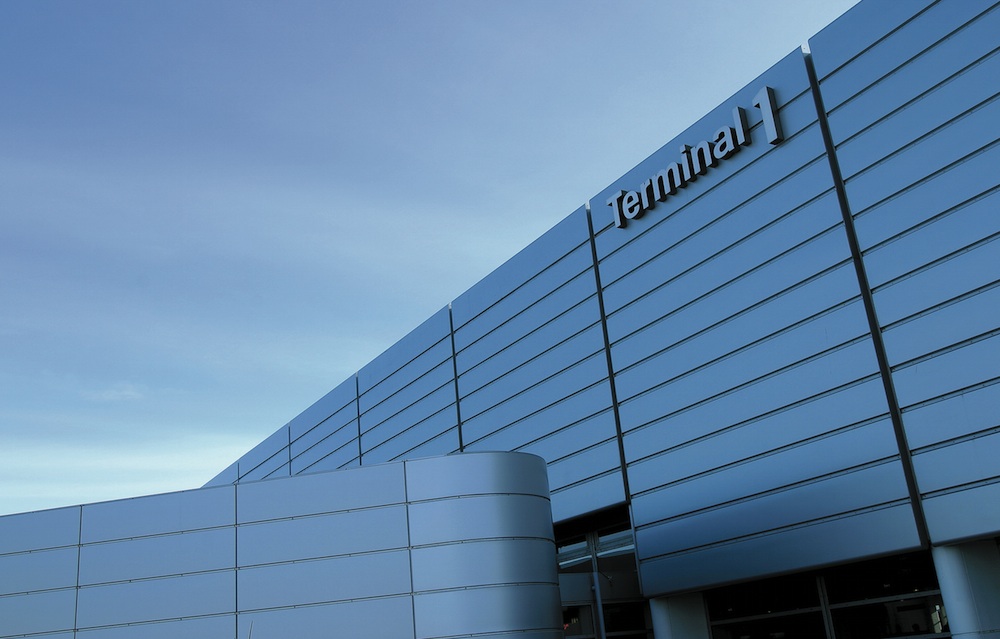 Modern video surveillance in airports requires flexible solutions which fulfil stringent quality and security demands: Distributed cameras, recording and transmission of video signals, live presentation, use of digital networks, intelligent picture processing, integration of audio channels and control as a video system via a higher-order (often already existing) building-management system.
Modern video surveillance in airports requires flexible solutions which fulfil stringent quality and security demands: Distributed cameras, recording and transmission of video signals, live presentation, use of digital networks, intelligent picture processing, integration of audio channels and control as a video system via a higher-order (often already existing) building-management system.Due to the layout of modern airports with numerous separate buildings and areas, the need arises for multi-area surveillance systems with the flexibility to set up secondary control centres as well, for example. Emergency scenarios and the integration of mobile control stations also play an important role (e.g. iPhone/iPad).
Picture generation
The security requirements at airports are extremely high. Whether on the airfield or in the hangar, the terminal buildings, car parks or access roads: At airports, huge premises with a variety of areas must be monitored around the clock. In particular, expansive areas such as airfields are especially challenging for video surveillance. In the past, in order to adequately monitor the entire area, it was necessary to use a number of cameras installed in a whole range of locations. Dallmeier’s multifocal sensor system Panomera®, however, represents an entirely new technology and a fundamentally different approach to the issue of video security
Panomera® is a unique HD camera technology, which was especially developed for the video surveillance of expansive areas. Panomera® guarantees highest detail resolution at every distance. Whereas conventional megapixel cameras have a definite disadvantage: The farther you zoom into the picture, the higher the loss of detail, causing the picture to become blurry.
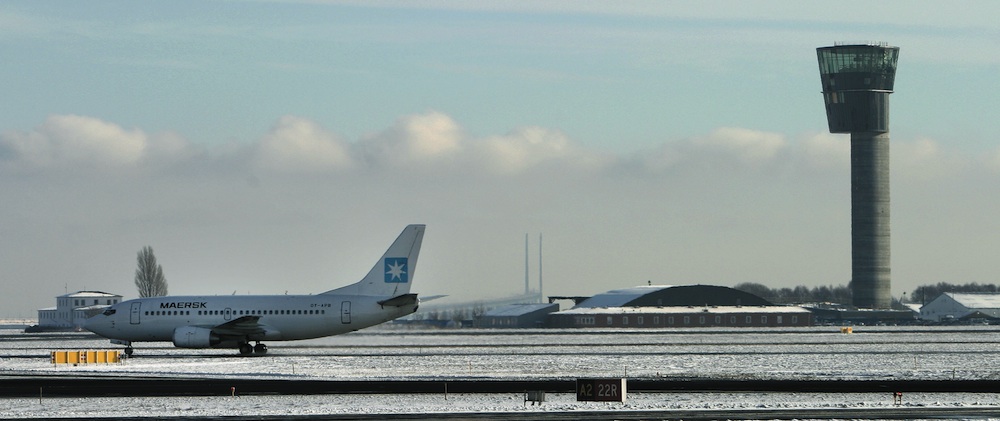 The multifocal sensor system Panomera® stands out due to its completely new lens and sensor concept: The resolution never falls below the specified parameters, not even in the most distant areas of the image. Therefore the Panomera® effect guarantees a uniform resolution over the entire scene. This way, even objects that are farther away can be displayed with the same resolution quality as objects in the foreground of the picture.
The multifocal sensor system Panomera® stands out due to its completely new lens and sensor concept: The resolution never falls below the specified parameters, not even in the most distant areas of the image. Therefore the Panomera® effect guarantees a uniform resolution over the entire scene. This way, even objects that are farther away can be displayed with the same resolution quality as objects in the foreground of the picture.In conjunction with other Dallmeier high-resolution IP cameras, this technology fulfils all the requirements of modern camera technology and is especially well suited for use in highly complex video surveillance systems of airports, with their wide variety of operating conditions.
Due to their very large dynamic range, Dallmeier cameras are ideal for use in airport terminals, for example, in which a variety of lighting conditions (including direct sunlight) are found over the course of the day due to large-size glass facades. Difficult lighting conditions of this type are also dealt with in the loading and unloading zones of freight terminals. At city-train stations, the cameras also provide picture material which is highly suitable for secure surveillance of the platforms, even in backlit conditions.
Dallmeier IP cameras are used with intelligent video-sensor technology in the field of outdoor security. Last, but not least, suspicious people and vehicles are reliably detected and the security control centre is alerted, even in rain, hail or snow, due to the excellent quality of the picture material generated.
In conjunction with Dallmeier picture transmission and recording technology, the operator is in control of a complete video security system with the best components, fine-tuned to one another, from one source.
Picture processing – Picture transmission – Picture storage
The Dallmeier product range offers the most modern solutions for the requirements of today’s airports. By using the Virtual Matrix and the numerous Intelligent Video Analysis Systems (from people counting to abandoned suitcases in the terminal area), solutions ensuring maximum security are created.
The Virtual Matrix from Dallmeier enables the transmission and recording of video and audio signals in broadcast quality via an Ethernet/IP network. Using this technology any number of cameras at an airport can be analysed, recorded and, if necessary, transmitted via the IP network. The implemented video compression enables camera pictures to be transmitted in real time and with the best possible quality and frame rate, even allowing convenient control of PTZ cameras. Recording also occurs in broadcast quality into a ring memory, which is automatically overwritten after a preset time has passed (e.g. 14 days).
Intelligent video analysis systems from Dallmeier are especially suitable for outdoor applications, e.g. for fence surveillance. They can analyse relevant video pictures and, for example, identify a person moving in a certain direction within a certain area as suspicious and alert the higher-order management system. The live picture is then switched to one of the video surveillance monitors by the Virtual Matrix. The most modern algorithms, such as object classification, ensure that the false alarm rate from ambient environmental influences is minimised.
In addition, the SEDOR® technology is also available for use inside the terminal or in the baggage claim area. It enables amongst others the monitoring of static objects and can alert the central security office if, for example, a suitcase was set down in a critical area and left for a longer period of time.
All Dallmeier devices can be integrated into the system network and enable simultaneous recording and playback of any connected camera via the time-shift method. PTZ functions can be used. Additional functions, such as slow-motion playback, scalability of picture quality, numerous playback functions and integrated picture filters for improvement of picture quality (e.g. with noisy camera signals) show the range of capabilities of our devices and predestine them for use in airports.
Dallmeier provides a variety of management systems for control of all the devices, and also different interfaces for integration into an existing infrastructure.
Airport Security Multifocal Sensor System Panomera®
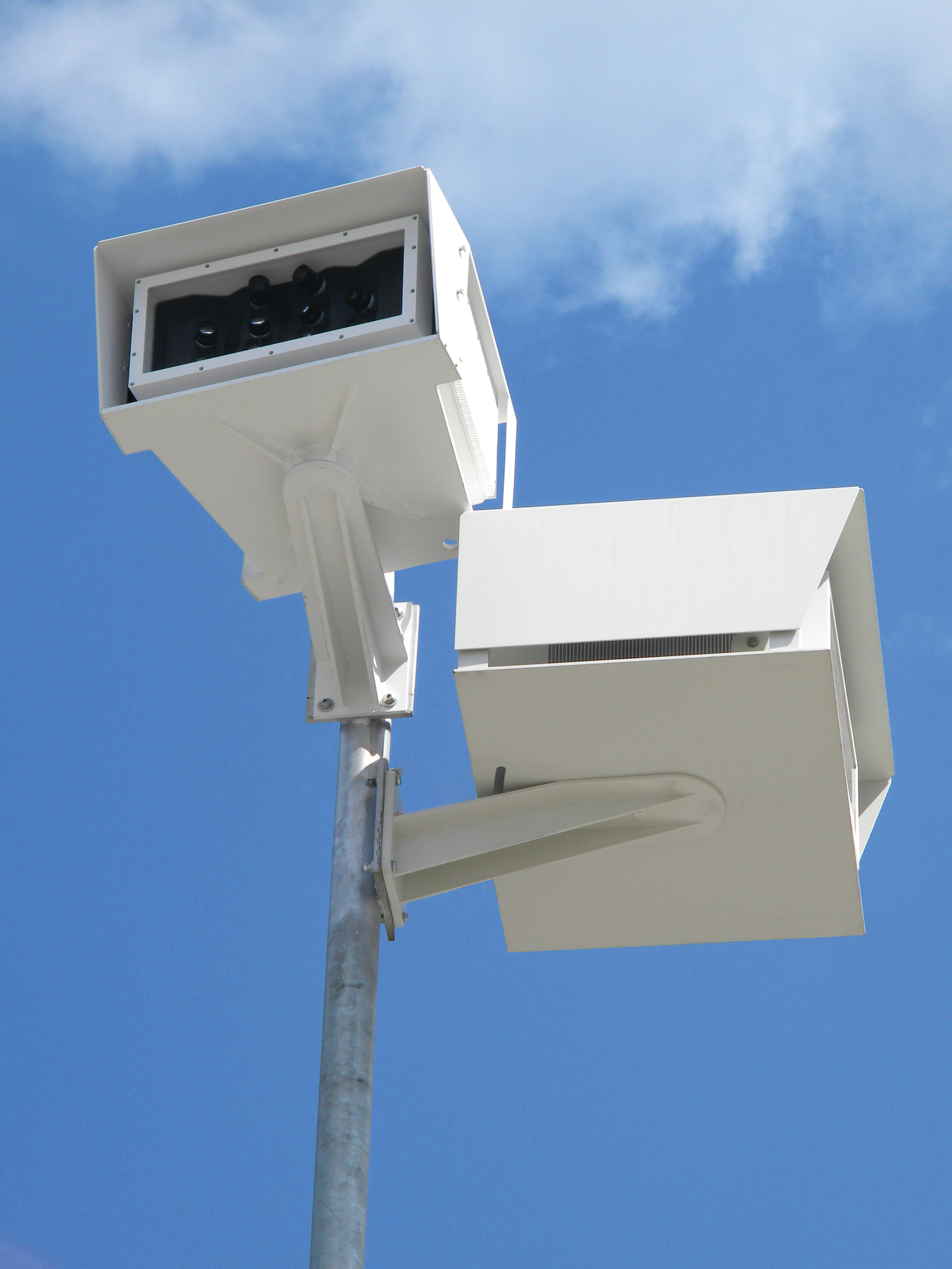 The security requirements at airports are extremely high, and video surveillance plays a major role in this area. Until now the task of monitoring every part of an airport has necessitated immense arrays of cameras. With its Panomera® multifocal sensor system, Dallmeier introduces an entirely new approach to video security technology.
The security requirements at airports are extremely high, and video surveillance plays a major role in this area. Until now the task of monitoring every part of an airport has necessitated immense arrays of cameras. With its Panomera® multifocal sensor system, Dallmeier introduces an entirely new approach to video security technology.Whether on take-off or landing runways, the airfield and hangars, the terminal buildings and baggage handling systems, car parks or access roads: At airports, huge premises with a variety of areas must be monitored around the clock. In particular, expansive areas such as airfields are especially challenging for video surveillance. In the past, in order to adequately monitor the entire area, it was necessary to use a number of cameras installed in a whole range of locations. Lots of cameras and lots of installation sites, meaning high requirements for the infrastructure. That is one of the disadvantages. The other disadvantage is the fact that despite oodles of cameras, in most cases, a “grand overview” is still not provided. This is because even top-notch wide-angle cameras reach their limits when they have to capture an entire airfield. And especially in situations that require zooming into the picture and recognising details at a substantial distance, even with a 12-megapixel camera the image very quickly becomes pixelly and blurry.
Now, a completely innovative camera technology is providing new impulses for the market: Panomera®, a multifocal sensor system which was specially developed for the all-encompassing video surveillance of expansive areas. Panomera® is not just a “superlative” in the competition among megapixel camera manufacturers that are constantly surpassing their own cameras with increasing megapixel resolutions, it is a completely new – and already patented – technology. Unlike conventional HD and megapixel cameras, which only have one lens, Panomera® functions with multiple lenses, each of which has a different focal length. With this novel sensor concept, surveillance can be ensured even for extremely large areas with just a single Panomera® system – including permanent recording of the entire image and at the highest possible resolution even at great distances! This can be done in real time and with high frame rates of up to 30 fps. In so doing, Panomera® far surpasses the conventional HD 1080p standard – the “Panomera® effect” begins where HD and megapixel cameras reach their limits.
Panomera® in comparison to previous systems
In the past, in order to ensure this type of comprehensive surveillance of wide areas, basically three options were available: The first option consisted of installing a large number of single cameras that then either work individually or are linked via a management system. A second option involved controllable PTZ cameras, with the third option consisting of 180°/360° cameras. So what’s the difference between Panomera® and these systems?
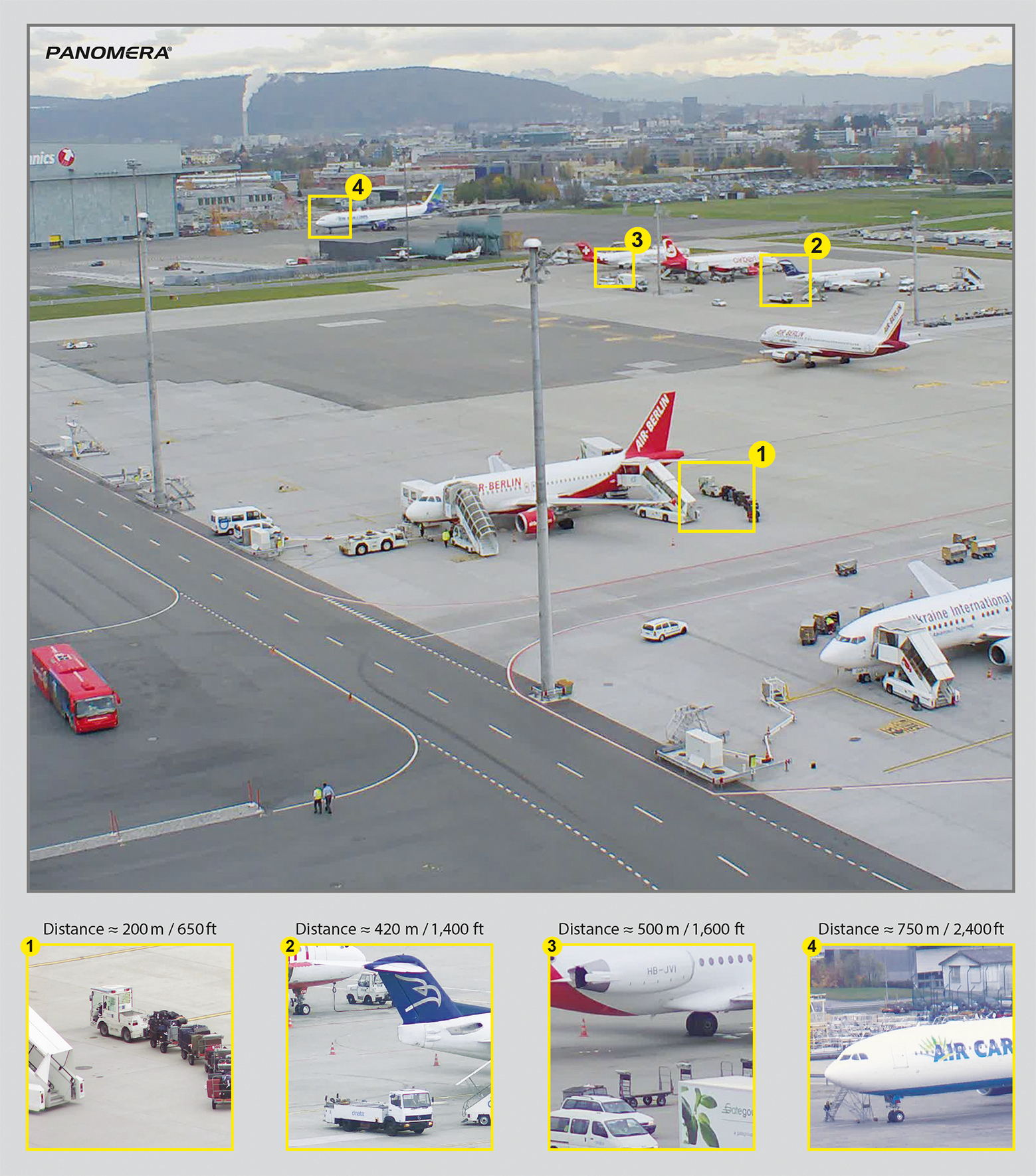 Panomera® vs HD cameras: Low infrastructure requirements
Panomera® vs HD cameras: Low infrastructure requirements
With Panomera®, the same area can be surveyed from a single location as with several HD cameras distributed over several locations. This offers two advantages: On the one hand, in some areas it is simply not possible to use more than one camera, since there aren’t enough installation sites or the required infrastructure (cables, electricity, etc.) cannot be created to the necessary extent. This means that Panomera® provides images for areas that otherwise could not be monitored at all. On the other hand, since fewer camera installation locations are needed, the requirements for the infrastructure are lower, along with expenditures for servicing and maintenance.
Panomera® vs PTZ cameras: Permanent recording of the overall view
PTZ cameras have a definite disadvantage: The operator must constantly decide between the overall view and a detail view. For instance, if the operator wishes to survey a certain area in more detail and zooms into it, only this detail is recorded. This means that later, no recording of the overall scene exists, so that incidents in other areas may be overlooked and can no longer be reconstructed. Here, Panomera® works differently: Regardless of the part of the surveillance area the operator focuses on at a particular moment, with Panomera®, the overall action is recorded at all times – with maximum resolution of detail. As a result, an incident can also be reconstructed in detail after the fact, no matter where it occurred.
Another advantage of Panomera® is its multiuser capability: In contrast to PTZ cameras, with which only one operator can pan, tilt or zoom, with Panomera®, an unlimited number of operators can navigate across the entire scene independently of each other. Although all operators are connected with the same camera, each of the individual users can select their view individually and zoom or pan as they desire. As a result, a range of different areas can be surveyed in detail at the same time.
And: In contrast to PTZ cameras, Panomera® has no movable mechanical parts, which means there is no wear, extending the camera’s lifetime.
Panomera® vs 180°/360° cameras: Huge areas in HD quality
At first glance, they may appear to be the ideal solution for surveying wide areas: 180° or 360° cameras that provide a comprehensive “bird’s eye view”. However, these cameras are only designed for short distances, for instance, for monitoring foyers or entryways. With some models, the “fisheye effect”, which distorts the picture at the edges, is also a problem. This is not the case with Panomera®, since the edges are clearly defined, without distortion. And most importantly, with Panomera® it is possible to survey and record huge areas with top quality (better than HDTV!). In addition, with Panomera®, the specific quality needed for a particular distance can also be individually adjusted. The multifocal sensor system can be specifically scaled to meet any requirement posed by the customer.
A Panomera® highlight: The lens
For the following explanation, let’s reacquaint ourselves with a notion that may seem obvious at first glance: While a real scene is three dimensional, in the camera display, it is only depicted two-dimensionally. For conventional HD or megapixel cameras, this means that the indicated resolution, let’s say, 12 megapixels, is evenly distributed on the entire viewing angle. The farther you now “move to the back” of the scene, meaning, zoom into the picture, the higher the loss of detail, causing the picture to become blurry.
Panomera® solves this problem with a completely novel lens and sensor concept. With innovative geometric construction principles, Panomera® uses its megapixels such that even objects that are farther away can be displayed with the same resolution as objects in the foreground of the picture.
Another advantage of this sensor concept is a substantially higher dynamic range. Panomera® works with several sensors, each of which selects its own exposure strategy in order to achieve ideal saturation. While with other cameras an average value is determined, Panomera® can make distinctions more effectively: Light areas are exposed for a shorter time and dark areas for a longer time. As a result, situations with a large dynamic range can also be recorded with good quality, without overexposure or “drowned” black areas.
Various application fields at airports
The multifocal sensor technology can provide a comprehensive overview of all activity around the airport and airfield, including a fully comprehensive documentation of take-offs and landings. The system provides a visual continuity for both live and retrospective analysis of any incidents or health and safety breaches of airside personnel and vehicles. Panomera® can also be used operationally for the detection of foreign objects and debris on the runway as well as assisting in the identification of problems with birds – enabling bird controllers to be directed to the right place at the right time. Operationally the system can assist with monitoring of aircraft movements from point of landing to parking. Panomera® opens up a wide range of analysis options, which were simply not possible with the prior technology.
A complete product portfolio
A camera alone does not make a video surveillance system. That’s why the manufacturer of the Panomera® technology – the Germany company Dallmeier – offers one-stop complete solutions, including cameras, recording technology, as well as video management and video analysis.
Panomera® from Dallmeier ensures enhanced security at Naples Airport
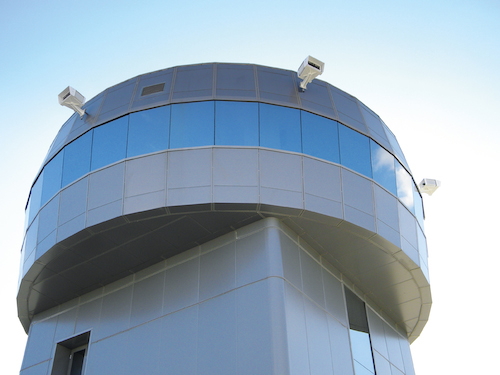 The international airport at Naples, Napoli Capodichino Airport, is used by 6 million travellers every year. With the introduction of the Panomera® multifocal sensor system from Dallmeier, security in both the apron and the airport forecourt areas is enhanced further still by the very latest in camera technology.
The international airport at Naples, Napoli Capodichino Airport, is used by 6 million travellers every year. With the introduction of the Panomera® multifocal sensor system from Dallmeier, security in both the apron and the airport forecourt areas is enhanced further still by the very latest in camera technology.
Napoli Capodichino offers direct connections to 50 domestic and international destinations. It is managed by GESAC SPA, a member of the F2I Airports Group, an airport management company known for the excellent quality of its services and for its culture of continuous improvement. GESAC works constantly to find efficient solutions and satisfy the requirements of its passengers and field operators, particularly with regard to personal safety and environmental protection.
Innovative multifocal sensor technology
GESAC‘s security engineers saw the Panomera® multifocal sensor system from Dallmeier for the first time at the “Sicurezza” trade fair in Milan in 2010, and were very impressed by the performance capabilities of this ground-breaking video technology. Unlike conventional cameras, which have a single focal lens, multifocal sensor technology is based on a multi-sensor platform with several lenses, each with different focal lengths, creating the unrivalled Panomera® effect. This innovative system provides surveillance of large areas with extremely high resolution, all from a single installation site.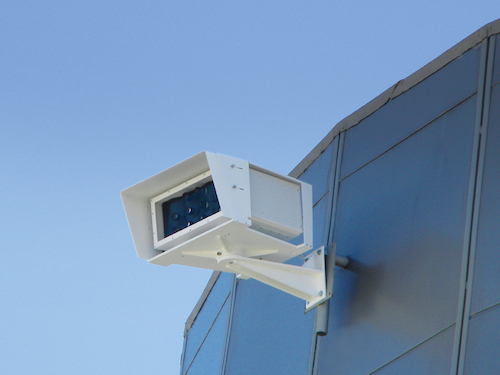 The contact at the trade fair was followed by an intensive planning and design phase, during which the staff at Dallmeier Italy worked closely with the “Infrastructure Development & Flight Operations” department of GESAC, under the direction of Alessandro Fidato. Representatives of Dallmeier Italy visited the site several times so that they could adapt the new video system precisely to the requirements of the airport management company.
The contact at the trade fair was followed by an intensive planning and design phase, during which the staff at Dallmeier Italy worked closely with the “Infrastructure Development & Flight Operations” department of GESAC, under the direction of Alessandro Fidato. Representatives of Dallmeier Italy visited the site several times so that they could adapt the new video system precisely to the requirements of the airport management company.
Safety for apron, runways and forecourt
For GESAC, two major zones of the airport site were of paramount importance: the area in front of the airport buildings (“Panomera® Forecourt” project), and the apron and runways (“Panomera® Airfield” project).
In the airport forecourt and concourse, Panomera® monitors traffic and pedestrian flows between the multi-storey car park, Terminal 1 and the network of feeder roads and paths by which people arrive at and leave the airport, either in motor vehicles or on foot.
The customer also wanted to obtain complete coverage of the movements of all vehicles and aircraft anywhere on the entire airfield, including the ramps and aprons, taxiways, and takeoff and landing runways, so that incidents could be reconstructed if necessary, wherever they occurred on the site.
The cameras of the Panomera® system for this airfield project were installed at a considerable height, close to the roof of the APRON tower at about 13 metres; three Panomera® systems installed in a semicircle provide a panoramic view through 228°. The Panomera® Viewer workstation was located inside the APRON Tower to provide security staff with a unique and full panoramic view of the entire airfield.
“With Panomera® technology, distant objects can be captured with the same quality as those in the foreground. The extremely high resolution over the entire area of interest and intuitive operation of the system led us to choose Dallmeier”, says Giuseppe Musto, Head of Innovation & Automation Development for GESAC.
Another important difference between Panomera® and conventional PTZ cameras is that the whole area to be monitored with Panomera®, is recorded continuously, so the high resolution images enable important, single details to be examined even after the event. With PTZ cameras, the general overview image is lost while the camera is recording a detailed area.
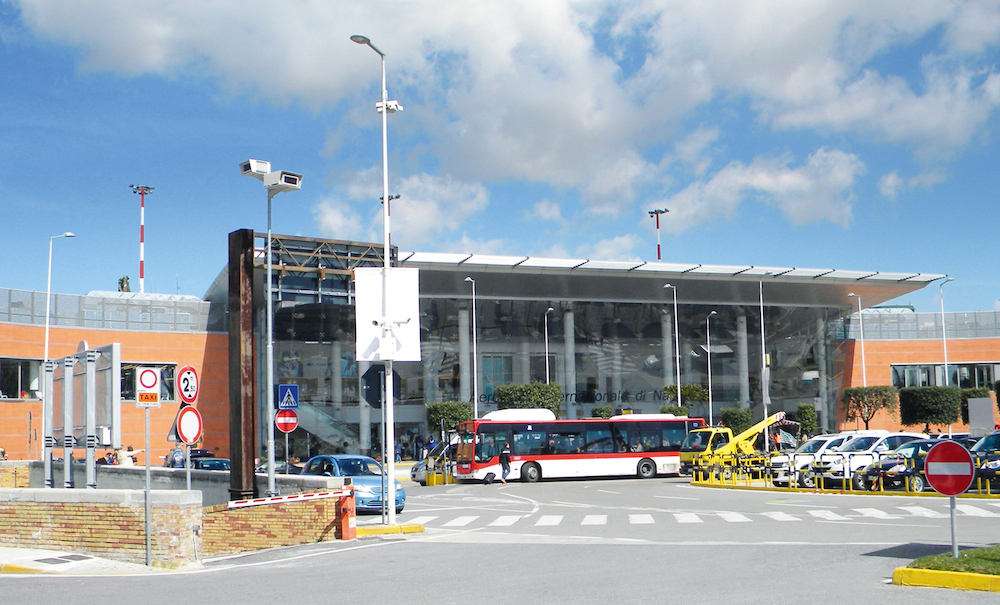
Reliable recording
Recording is based on the Dallmeier DIS-2/M NSU blade technology – this ensures maximum availability and reliability of the recording. Each blade unit is equipped with a redundant hard disk. The units are powered via a rack for 19" slide-in modules with redundant power supply units. The rack system can accommodate up to 10 single modules, so that even relatively large systems can be installed in compact and cost-efficient manner. The modular structure of the system guarantees high availability of the overall solution.
Complete success
Alessandro Fidato, Director of the Infrastructure Development & Flight Operations department, describes the video system as a resounding success: “With these two projects, GESAC confirms its orientation towards innovative solutions that ensure high standards of security and simplify management arrangements. We are very satisfied with this cooperation.”
Pierpaolo Piracci of Dallmeier Italy responds: “I am very proud to have been personally involved in these highly innovative projects, and I would like to thank Alessandro Fidato and Giuseppe Musto of GESAC SPA for the confidence they have shown in our technology and professionalism.”
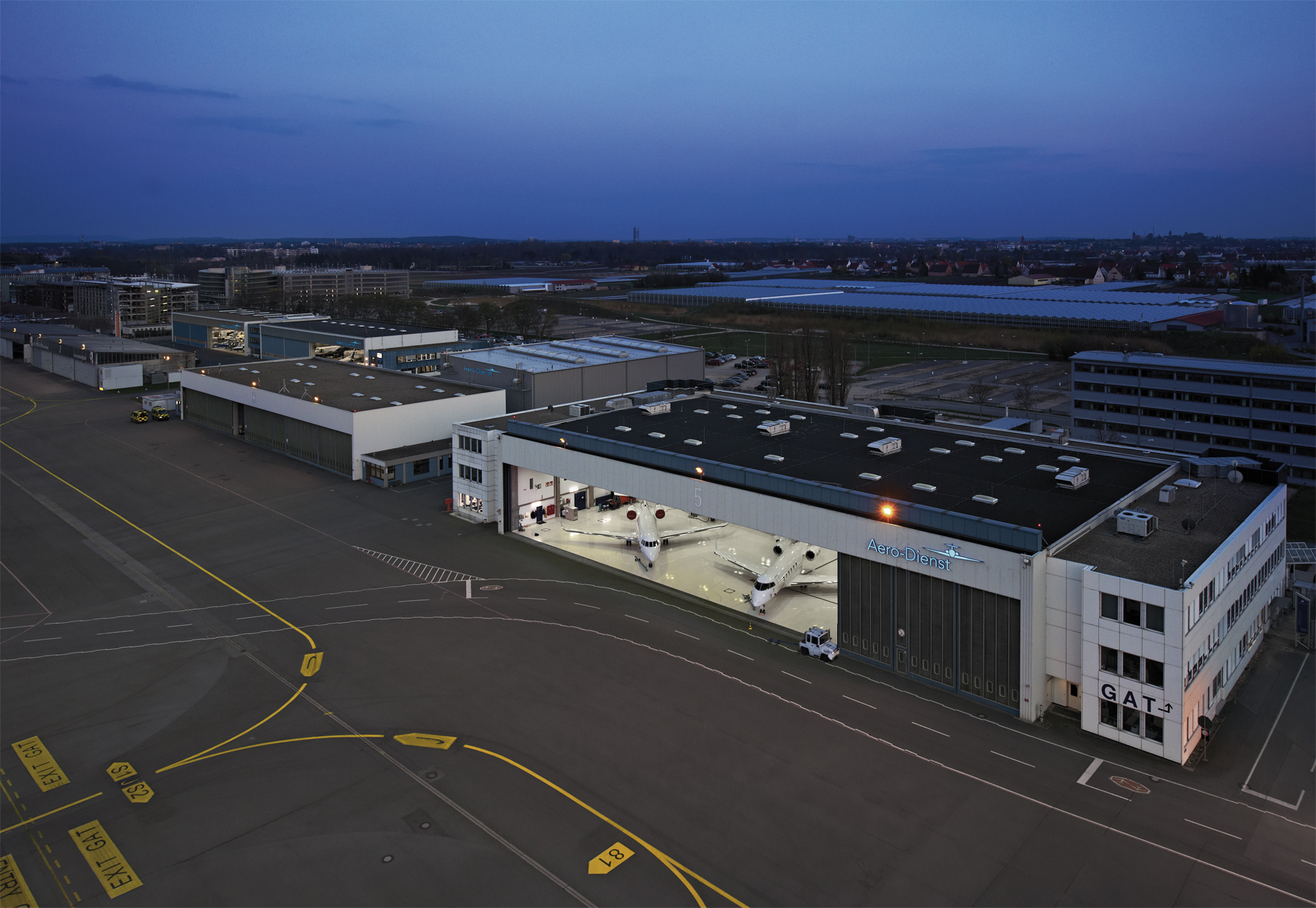 As a full-range supplier in the field of business aviation, Nuremberg-based Aero-Dienst also demands the highest standards when it comes to security. That is why it is using a completely new video surveillance concept: Modern multifocal sensor systems ensure the security of all four of its hangars including the outdoor areas.
As a full-range supplier in the field of business aviation, Nuremberg-based Aero-Dienst also demands the highest standards when it comes to security. That is why it is using a completely new video surveillance concept: Modern multifocal sensor systems ensure the security of all four of its hangars including the outdoor areas.
Aero-Dienst has provided its customers with an extensive range of services in business-related aviation for over 50 years. This includes maintenance and operation as well as purchase, sales and management of business jets. Almost 300 employees look after the special requirements of their customers. Here too, the question of security is important. “We intend to afford our customers the highest level of security when they entrust us with the care of their jets”, declares managing director Martin Bauer.
Accordingly, Aero-Dienst was searching for a video surveillance system that would meet its needs – and was leaving nothing to chance in the process. A number of providers were reviewed, and no less than three test installations including cameras from various manufacturers were tried. But none of the test configurations satisfied the Nuremberg company’s requirements. “Until we saw the Panomera® from Dallmeier. This approach was really impressive”, says Martin Bauer.
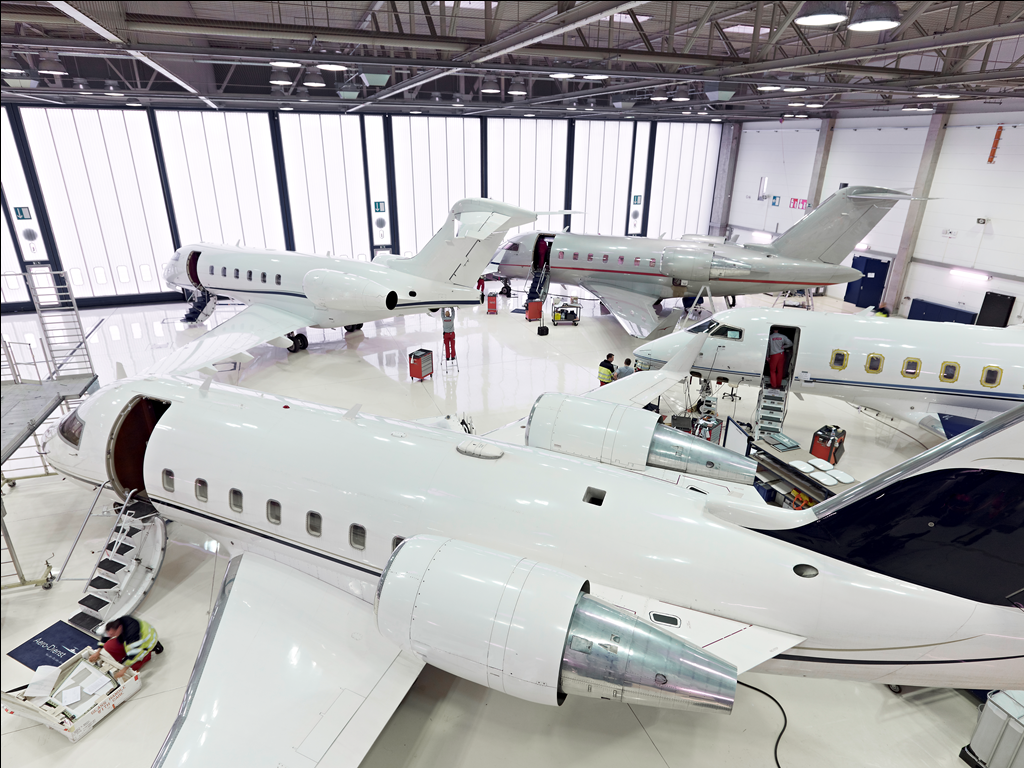 A patent solution
A patent solution
Panomera® is a “patent” solution in the true sense of the word: The new camera system, a multifocal sensor system, is not only exceptionally powerful, it has also been patented because it is unlike any other system currently available. Unlike conventional HD and megapixel cameras, which only have one lens, Panomera® functions with multiple lenses, each of which has a different focal length. With this novel sensor concept, surveillance can be ensured even for extremely large areas at the highest possible resolution to the farthest background of the area of coverage.
Two Panomera® systems were installed in each hangar, in opposite corners of the structure. In order to be able to cover all possible angles, a high-resolution HD camera was mounted in each of the other two corners. “We can have a total overview of the entire hall with no omissions using just four cameras. That is an area of well over 1,300 m2”, explains Roland Meier, Head of Panomera® Multifocal Sensor Systems at Dallmeier. All four hangars will be subject to surveillance in this way.
The images are recorded in highest resolution and stored for up to 90 days on powerful video servers manufactured by Dallmeier. This will enable any incidents that occur to be reproduced and investigated subsequently as well.
Andreas Bengelstorff, Head of Security / Buildings, is satisfied: “There really is not a single blind spot that we can’t see anywhere in the halls any more. This means that we can offer our customers the most comprehensive security possible. We also have a much better view of the scene ourselves, which will help us to optimise our own processes and workflows.”
 More details, less cost
More details, less cost
The high resolution is not the only advantage that comes with the Dallmeier solution. “The other offers that were submitted in response to our call for tender specified the use of at least 14, or even 18 cameras in order to provide coverage of the area for which we now need just four cameras”, relates Andreas Bengelstorff. He adds: “So we also only need four installation locations, not 18. That represents an enormous saving in terms of installation, infrastructure and maintenance. Ultimately, we have decided on the solution that is not only technologically unrivalled, but also the most cost-effective.”
Good images even at night
Besides the service hangars, the outside areas are also protected reliably by two Panomera® systems. Here, at 10,000m2 the coverage area is even larger!
Besides the multifocal sensor systems, HD cameras with integral IR lighting are also installed to capture the best possible images at night as well. The IR cameras from Dallmeier also have a unique feature: In contrast to conventional IR cameras, which have many small LEDs arranged in a ring around the lens, Dallmeier IR cameras have three large, high-powered LEDs. These endow the IR cameras with very high spotlight power and homogeneous illumination even in the peripheral areas.
“In addition, we have been able to integrate existing cameras in the outdoor area in the new system”, adds Roland Meier.
Plans for the future
The system has already proven itself in practice, and has run faultlessly since it was commissioned. Andreas Bengelstorff is satisfied: “Not only are the products great, customer support is excellent as well. This just confirms our belief that we made the right choice!”